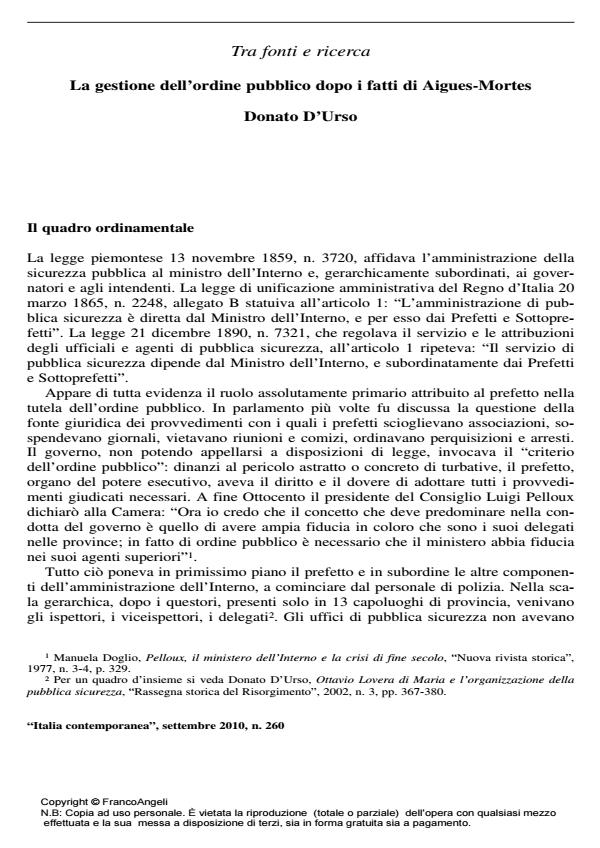The administration of public order after the Aigues-Mortes events
Journal title ITALIA CONTEMPORANEA
Author/s Donato D'Urso
Publishing Year 2011 Issue 2010/260
Language Italian Pages 15 P. 511-525 File size 294 KB
DOI 10.3280/IC2010-260009
DOI is like a bar code for intellectual property: to have more infomation
click here
Below, you can see the article first page
If you want to buy this article in PDF format, you can do it, following the instructions to buy download credits

FrancoAngeli is member of Publishers International Linking Association, Inc (PILA), a not-for-profit association which run the CrossRef service enabling links to and from online scholarly content.
The massacre of immigrant workers of August 1893 at Aigues-Mortes, in South France, aroused fierce protest in many an Italian city, with popular demonstrations occasionally turning into acts of violence: the worst disorders occurred in Rome against the French embassy and in Naples. The police authorities were taken by surprise and could not withstand mass unrest by proper measures. Since, at that time, the police forces were rather small in number (counting some 5.000 men in the whole country), the situation often required the resort to the army in the maintenance of public order. The A. describes the measures taken by the Rome and Naples Prefects who were in charge of that job. The committees of inquiry passed negative judgements on their conducts and the government punished both high officials for having underestimated the danger and badly used the forces at their disposal for the repression of the riots. As an appendix, the study carries the Royal Decree Jan. 5th 1899 which regulates the resort to troops in police service far more precisely than ever before.
Keywords: 19th century Italy, public order, R.D. January 5th 1899, Prefects, mass disorders, Aigues-Mortes
Donato D'Urso, La gestione dell’ordine pubblico dopo i fatti di Aigues-Mortes in "ITALIA CONTEMPORANEA" 260/2010, pp 511-525, DOI: 10.3280/IC2010-260009